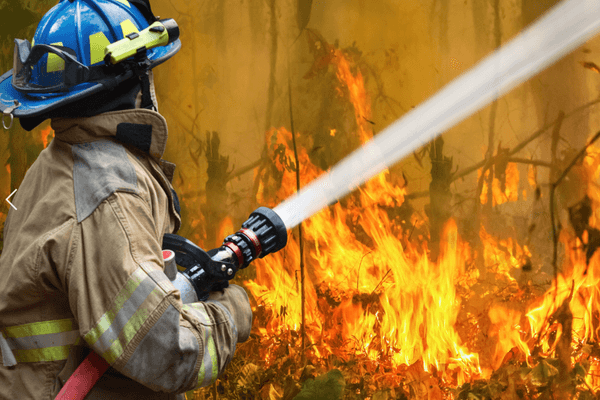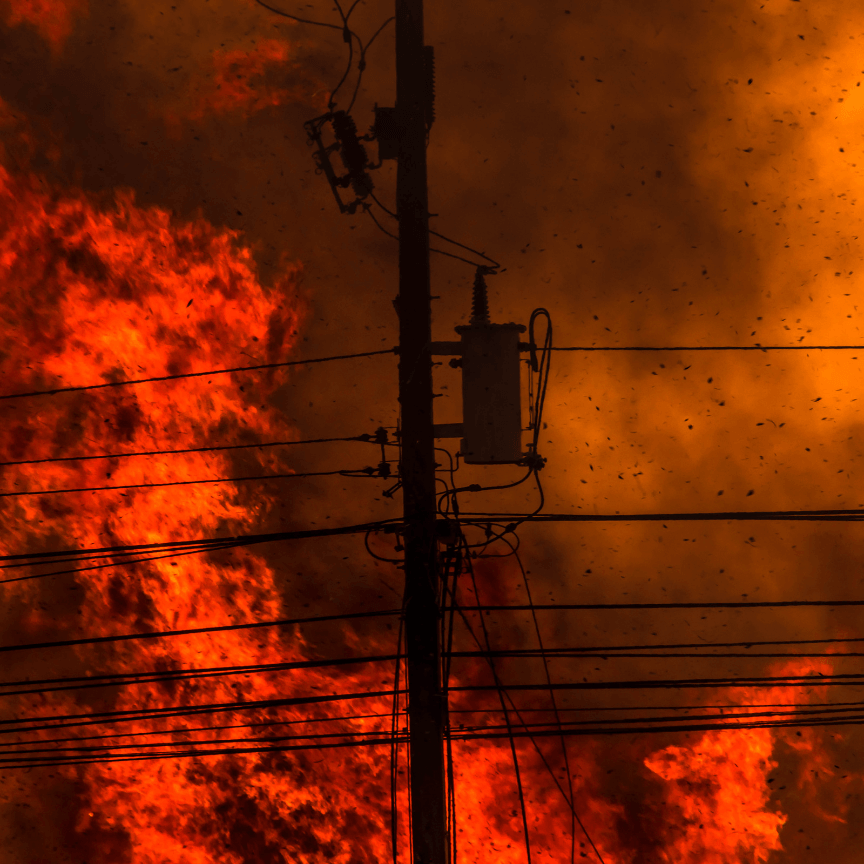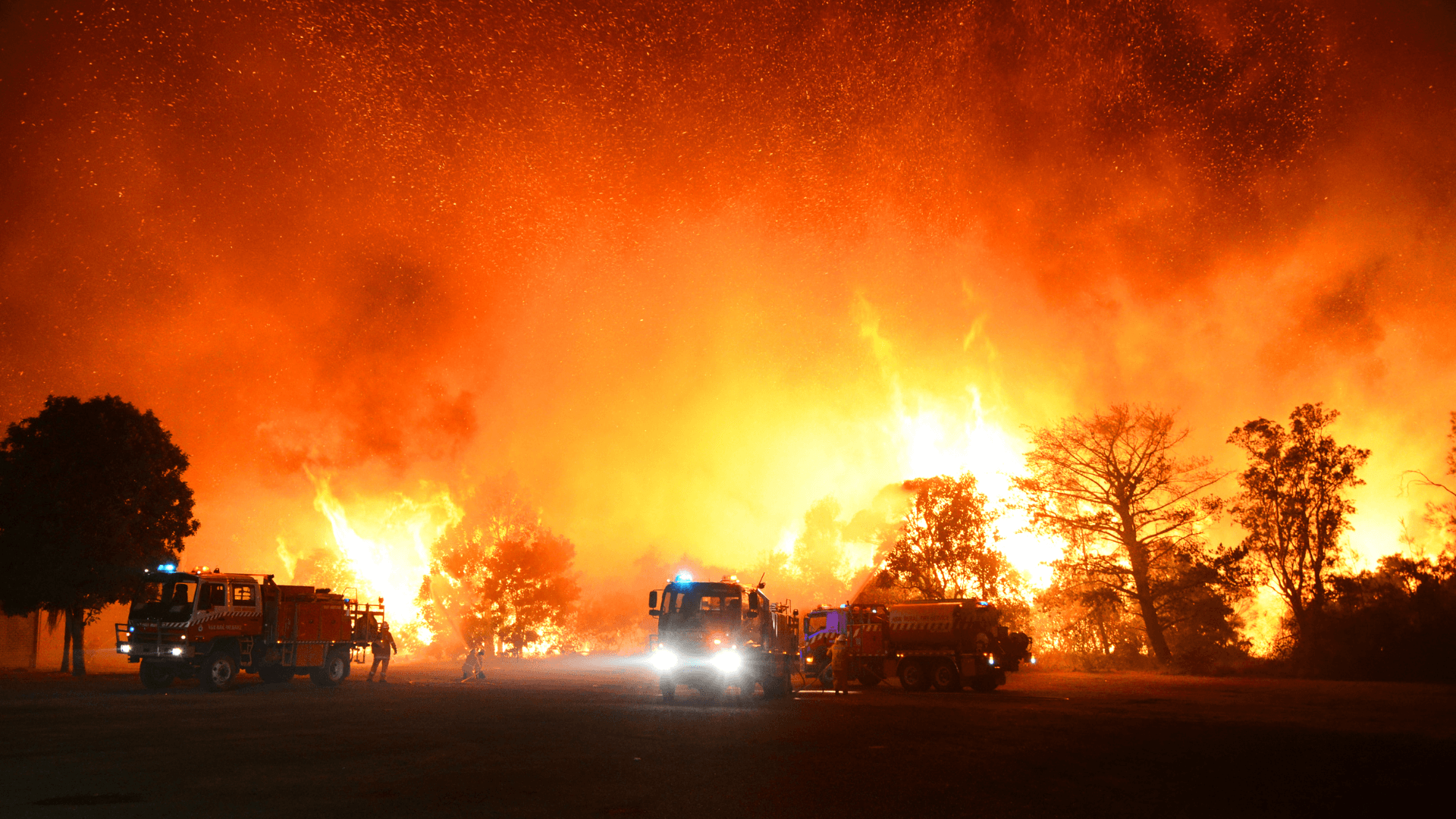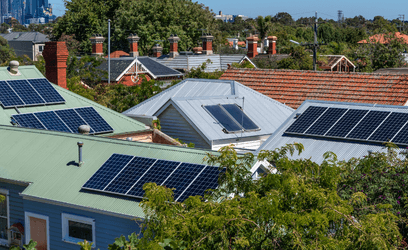Bushfires
Over the last 40 years, the duration of Australia’s bushfire season has increased 27 days on average, now lasting for 130 days a year. With the impact of global warming, it's likely the duration of our bushfire season will continue to increase.
The 2019/2020 bushfires in Australia were one of the worst in the world. It’s estimated 143,000 square kilometres were burned, over 3,000 buildings (including 2,779 homes) were destroyed, and sadly, 34 lives were lost.
Responding to a bushfire
Bushfires also pose a risk to electrical infrastructure; heat and flames cause damage to the network and can be responsible for bringing down powerlines. Emergency responders need to exercise extreme caution when approaching a fire and look out for electrical hazards.
High voltage powerlines are common in rural areas and bushland. They can be hard to spot, especially when responding given smoke and other conditions. There is a strong likelihood that high voltage powerlines may be damaged following a bushfire so it’s important to stay switched on when responding and consider the following:
- Remain vigilant when driving vehicles where powerlines may have fallen.
- Always assume powerlines are live and refer to the pre-incident fire plans to identify the likely location of overhead powerlines.
- Look out for sagging powerlines; the heat can cause them to droop or weaken. If you spot any, that’s an indication of damaged electrical infrastructure. Be sure to stay at least 8 metres away.
- Treat all fallen or damaged powerlines as live. Never assume that because there's a bushfire the power is off.
- If fallen trees and branches are touching powerlines, don't rush in to clear up as they could be energised.
- Stay clear of overhead transmission lines.
What to do if you come across fallen powerlines
- Contact your control centreAlert your control centre of the fallen power lines. The control centre will alert the local electricity distributor who will send assistance immediately.
- Watch out for fallen, sagging or damaged wiresStay 8 metres away from fallen, sagging or damaged wires, and set up an exclusion zone to keep others away.
- Never assume the power has been turned offAlways assume all powerlines are live. Never stand underneath them or touch the powerlines.
- Be aware of ongoing risksBe aware that damaged or fallen power lines may recoil.
House fires
Approximately 40% of house fires are caused by electrical faults and appliances each year. Big and small, house fires pose electrical risks which responders need to be mindful of.
When faced with a property fire, the best approach is to:
- Turn off the power supply at the main switch. Keep in mind there may be more than one main switch.
- Perform a hazard and risk assessment to identify any potential hazards and look at the controls required to reduce the risk they present.
It’s important to be aware that the mains power isn’t fool proof. If the main power switch is off, it does not mean the site is electrically safe; a possibility of explosion or electric shock remains as the conductors are still live between the supply point and the switchboard.
Illegal wiring
Illegal wiring that isn't controlled by the main switch can sometimes be present, leaving power energized to the property.
Generators
In rare circumstances, generators are used to supply properties with power. Be aware, listen and look out for generators in use.
Responding to house fires
Whilst it’s tempting to jump straight in and help, it’s important to identify and be aware of potential electrical risks. Following these safety guidelines will help keep you, your crew and the public safe:
- Don’t park vehicles under or close to powerlines.
- Keep any hydraulic equipment away from overhead powerlines.
- Be aware of illegal wiring not controlled by the main switch.
- Be aware of alternative energy power sources which may be present such as solar systems.
Watch out for metal structures or other conductors of electricity
Be aware of your surroundings. Take time to identify objects around you that could be energised and can conduct electricity such as fences and garden equipment.
Fences and water pipes also pose a danger when fighting a bush fire. If a powerline falls on a structure such as a fence, it can become energised, carrying electricity for long distances particularly in rural areas. Never approach or touch the fence, and warn others of the danger.
Arcing & plasma bursts
Severe flames and dense smoke can also cause powerlines to arc the earth, causing what is known as a plasma burst. This can cause an explosion and is a highly dangerous. Always steer clear of powerlines in areas of fire or smoke.
Risks of burning poles and cross arms
Whether it’s a house or bushfire, wooden power poles and cross arms are vulnerable to catching fire if they’re in proximity.
Did you know that wooden power poles are treated with Copper Chrome Arsenic (CCA)? This is the reason they are green in colour. The smoke from a fire damaged CCA pole can present a potential cancer risk if inhaled. It's important to leave it to the experts when handling wooden power poles in clean-up efforts. They must be wrapped to allow for safe handling and personnel must wear the correct PPE for the task.
Extinguishing fire on power poles
When arriving on scene, ensure you park all vehicles at a safe distance, stand back and keep others at least 8 metres away.
FRNSW and RFS need to obtain clearance from a DNSP Authorised Person that the powerlines have been isolated before undertaking any spraying.
If power is not isolated emergency workers are at risk of electrocution as powerlines can re-energise, or fault conditions can result in electricity travelling and arcing.
If you encounter a pole top fire, let it burn (until the power is isolated) and protect people and property in the area from catching alight.


1
water is a conductor of electricity


2
Risk of re-igniting
Responding to fire at a Substation
Like any other building, an electricity substation is also at risk of fire. If you’re responding to a fire at a substation or any other electricity facility, it’s important extreme caution is taken. There are risks of toxic fumes and electrical equipment that may be filled with oil which is a highly flammable substance.
- Never enter a substation without electrical distributor personnel present.
- Wait for the electrical distributor as they know what additional risks are inside, including chemicals and other hazardous materials.

